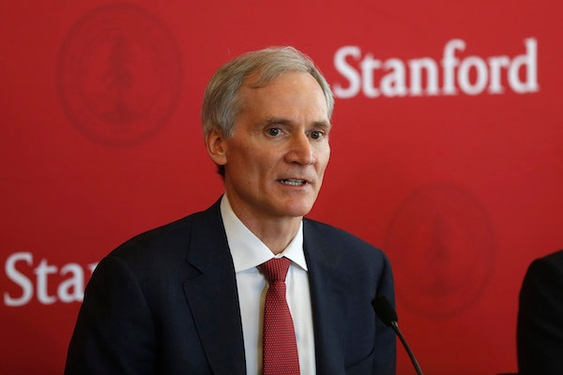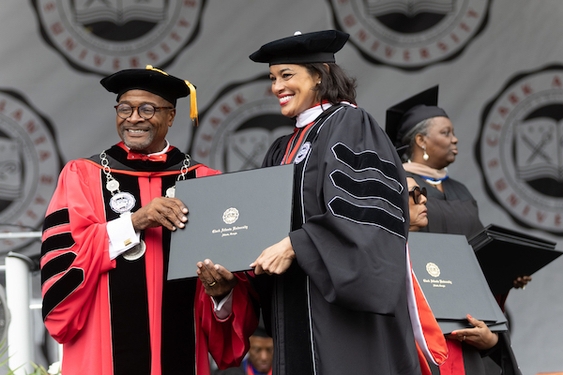Julianna French had a law degree and more than six years of teaching and forensics coaching experience. But it wasn’t until she completed a master’s degree in 2013 that she landed a highly sought, full-time teaching position in Irvine Valley College’s Communication Studies department.
To support herself and pay off student loans, French initially waited on tables and tutored to supplement her income earned from teaching part-time at IVC, Saddleback College, and Concordia University.
“I don’t have to worry about the financial side anymore,” said French. “There are a lot more responsibilities as a full-timer, but it’s stable. As an adjunct, you may have three classes one semester, then zero the next semester.”
Job instability, lack of promotion to full-time positions and limited engagement with students are some of the biggest concerns for part-time professors, whose numbers are increasing every year.
According to an American Association of University Professors report, “Trends in Faculty Employment Status,” just 30 percent of faculty members in higher education worked part-time in 1975. That figure rose to 40 percent by 1993, and today it is over 51 percent.
The original purpose of adjunct professors was to temporarily bring in working professionals to teach students more practical skills, while full-time faculty members focused on theoretical knowledge. College officials contend that part-timers bring real-world experience, and their compensation reflects a lesser workload.
In light of recent cuts to educational funding, however, some unions and professors claim that hiring adjunct professors has become more of a cost-reducing measure.
“Most of these positions don’t have any benefits at all,” said John Curtis, the director of research and public policy at the American Association of University Professors. “They aren’t given health insurance or access to retirement plans, and there’s no job security.”
Adjunct professors are often paid per course, and pay rates vary based on a variety of factors, such as the professor’s educational background and teaching experience, the type of institution — community college, public or private four-year university — location, and subject matter.
Pay for adjunct professors in Orange County, for example, generally ranges from $2,500 to $4,000 per course. That compares with an average annual salary of $77,000 to $174,000 for full professors listed in the AAUP’s 2013-2014 Annual Report on the Economic Status of the Profession.
At Chapman University, pay for adjuncts starts at $3,600 per course and may go up to $6,000, depending on faculty members’ experience and the school where they teach, says Raymond Sfeir, vice chancellor for academic administration.
Compensation is a complex matter for larger universities such as the University of California-Irvine, where lecturers can start at $47,584 or more annually, depending on the school and their instructional workload each academic quarter.
Unions and their members argue that the growing emphasis on part-time professors jeopardizes academic programs because faculty members aren’t given enough support to do the best job possible for their students.
Sfeir points out that the roles and responsibilities for adjunct professors differ from those of full-time professors.
“Full-time professors teach four to eight classes at a time, and it goes beyond just teaching,” he said. “They have to publish in journals in the field in order to maintain their full-time status and receive promotions. They also have service duties, such as being part of a committee and advising students on their majors and career goals. Part-time faculty don’t have these responsibilities; they’re there to teach.”
Michael Parks, interim director of the Annenberg School of Journalism at the University of Southern California, said the program’s 80 adjunct professors contribute a working knowledge of “current practices.”
“They come directly from their jobs in Los Angeles newsrooms, in Los Angeles public relations practices companies, and so they know what’s current,” Parks said. “It’s not that the full-time professors don’t, but in a sense we’re augmented by the adjunct faculty.”
Also, some adjuncts have moved beyond traditional newsrooms to more entrepreneurial positions, he added. That experience is relevant in an industry that has lost thousands of jobs as its business model shifted.
A research paper published in the National Bureau of Economic Research last fall found that non-tenure track faculty at Northwestern University outperformed tenure-track professors in introductory classes. But the untenured faculty in that study had more long-standing ties to the university, and were better compensated, than most adjuncts.
California laws prevent adjunct professors from working more than a 67 percent teaching load in a single district, said Phyllis Eckler, chairwoman of the California Federation of Teachers’ Part-Time Faculty Committee.
“That means that they can only teach two-thirds of the hours that full-time faculty work in the classroom,” she said. “Most full-time faculty at the community colleges teach 15 hours a week, and their preparation and grading are also paid. Adjunct faculty at the 67 percent limit are therefore paid for only 10 hours’ maximum teaching per week.”
Eckler adds that preparation and grading are generally not considered part of an adjunct’s workload, so they do not receive compensation for those tasks.
Engaging with students and the campus community is another common concern for adjunct professors.
“It’s difficult to meet with students after class because you have to rush off to another class at another college,” said Liza Rios, a professor of communication studies at El Camino College’s Compton Center who worked as an adjunct at several different colleges for 15 years before landing her current, full-time job last year. “And adjuncts usually don’t get paid for office hours or staff meetings like the full-timers do.”
Rios says that although adjuncts are exposed to a variety of curricula and teaching practices at different colleges, they are generally given more basic classes at less desirable times, such as Saturdays or early mornings.
“And if a full-timer needs a full class load for that semester, they can take your class,” she added.
Adjunct professors are trying to improve their situation through collective bargaining.
Approximately 25 percent of part-time faculty in the U.S. are unionized, said Craig Flanery, the administrative director for the New Faculty Majority, an organization focused on improving working conditions for adjunct and contingent faculty members.
“In the public sector it is higher, due to many states having legislation that supports the desires of part-time faculty to be unionized,” Flanery said.
Kathy Holland, an adjunct professor for the political science departments at Pierce College and Glendale Community College and a member of the CFT, said adjunct professors can teach for 10 to 20 years without ever obtaining a full-time, secure position.
“There’s a lot of us who would love to be full-time but are passed over by outsiders who have never taught at a community college or even in our district,” said Holland. “Promotion from within does not happen, and if it weren’t for unions, there would be no job security for us.”
———
©2014 The Orange County Register (Santa Ana, Calif.)
Visit The Orange County Register (Santa Ana, Calif.) at www.ocregister.com
Distributed by MCT Information Services
—————




